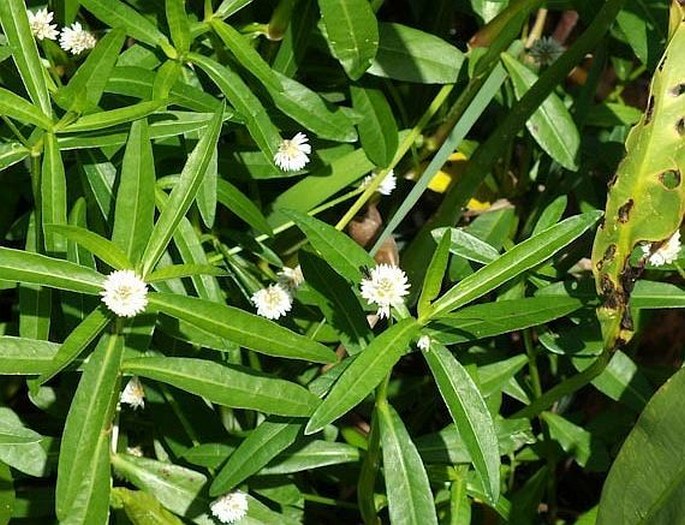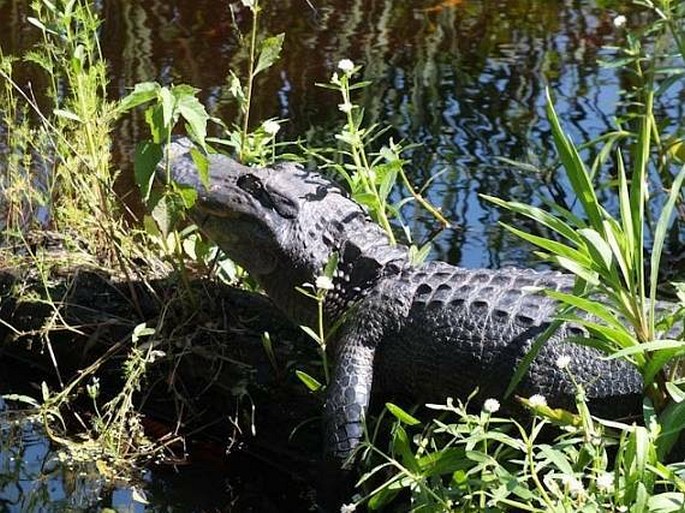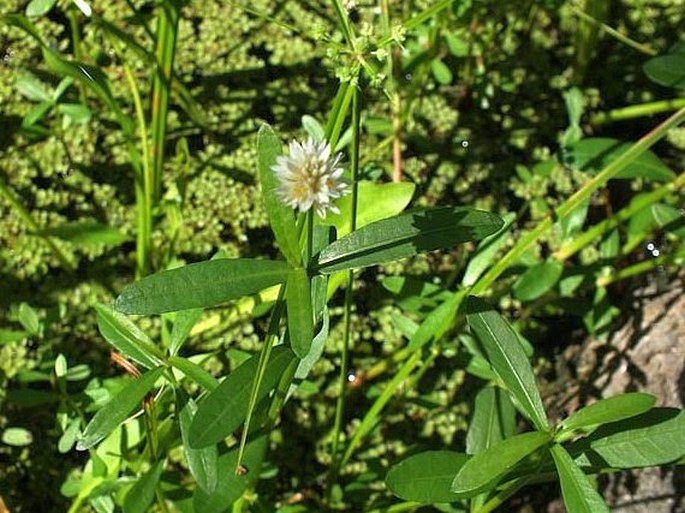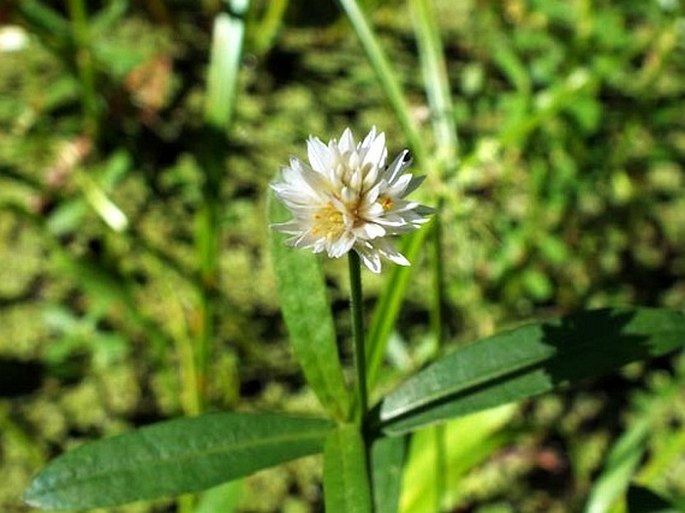Syn.: Achyranthes philoxeroides (Mart.) Standl., Bucholzia philoxeroides Mart., Celosia amphibia Salzm. ex Moq., Mogiphanes philorexoides D. Parodi, Telanthera philoxeroides (Mart.) Moq.
Family: Amaranthaceae Juss.

Distribution: Native to South America from Venezuela through Brazil (Amazônia, Caatinga, Cerrado, Mata Atlântica, Pampa, Pantanal) to northern Argentina, Paraguay and Uruguay. Naturalized in most of the tropical areas of the world. In US from Virginia along Atlantic coast to Texas and also in California. Reported in China, Taiwan, Australia, New Zealand and West Indies. Although it is an invasive weed, it is cultivated in certain areas as animal feed.
Ecology: Aquatic to land habitat in swamps, wet meadows, disturbed areas at low elevations. Blooms from May to October.
Description: Perennial herb, both aquatic and terrestrial. Stems ascending from creeping rhizomes and stolons, 55–120 cm long, forming large, dense mats. In water, free flowing roots growing from stem nodes. Stems branched, young stems and leaf axils white hairy, old ones glabrous. Leaves are opposite, sessile, shiny, dark green, lanceolate to elliptic, 20–90 mm long, 10–20 mm wide, margins entire, with a prominent rib. Aquatic plants have larger leaves. Flower head pedunculate, solitary from leaf axil, globose, 1–1.5 cm in diamater, bracts white, ovate, 2–2.5 mm; tepals white, oblong, 5–6 mm, glabrous, apex acute; filaments 2.5–3 mm, anthers yellow; pseudostaminodes oblong-linear; ovary obovoid, compressed. Seeds rarely set.
Note: Highly invasive weed, tolerant of brackish water. Despite of low viability of seed (if and when set), plant reproduces vegetatively and this growth occurs at apical stem buds and axillary stem and root buds and the plant is spread through fragmentation.



These images were taken in USA, Louisiana, Jean Lafitte NP, Barataria Preserve (May 2014).


